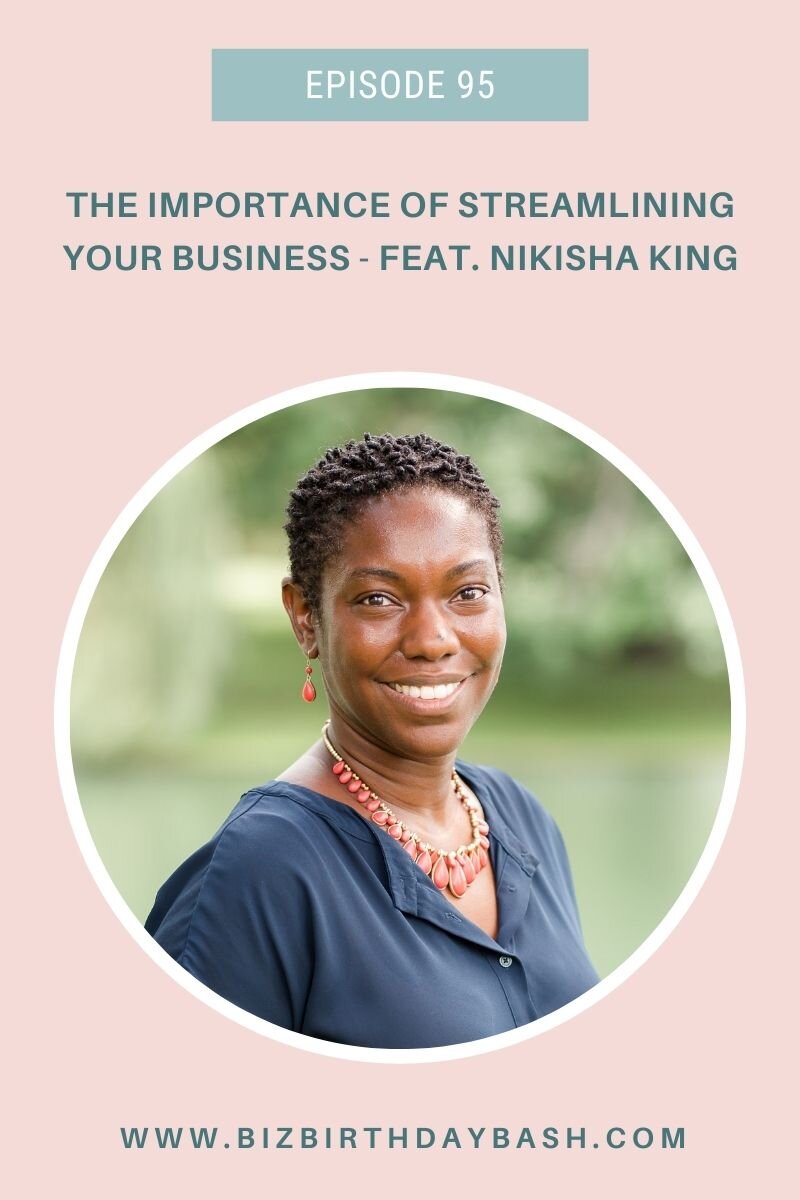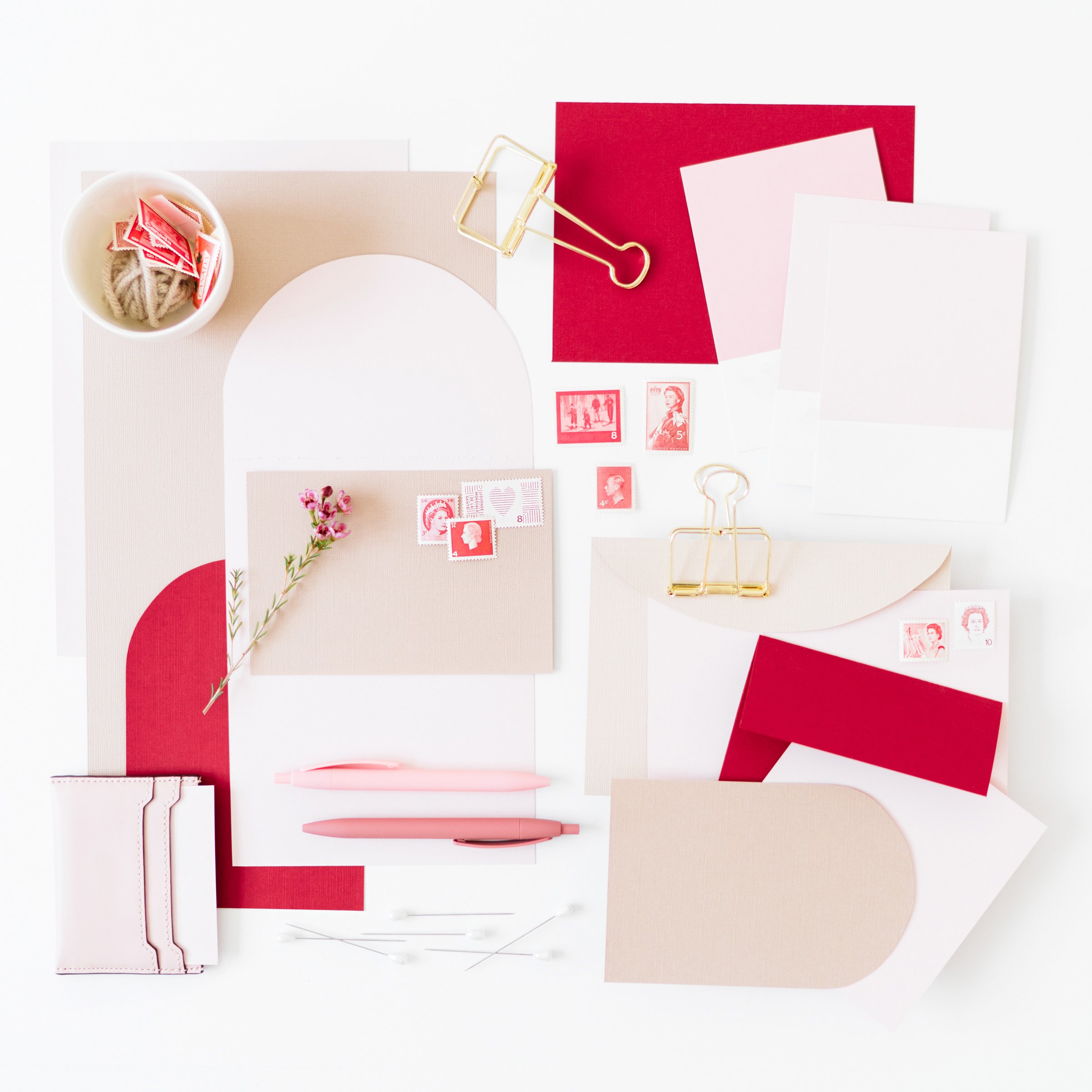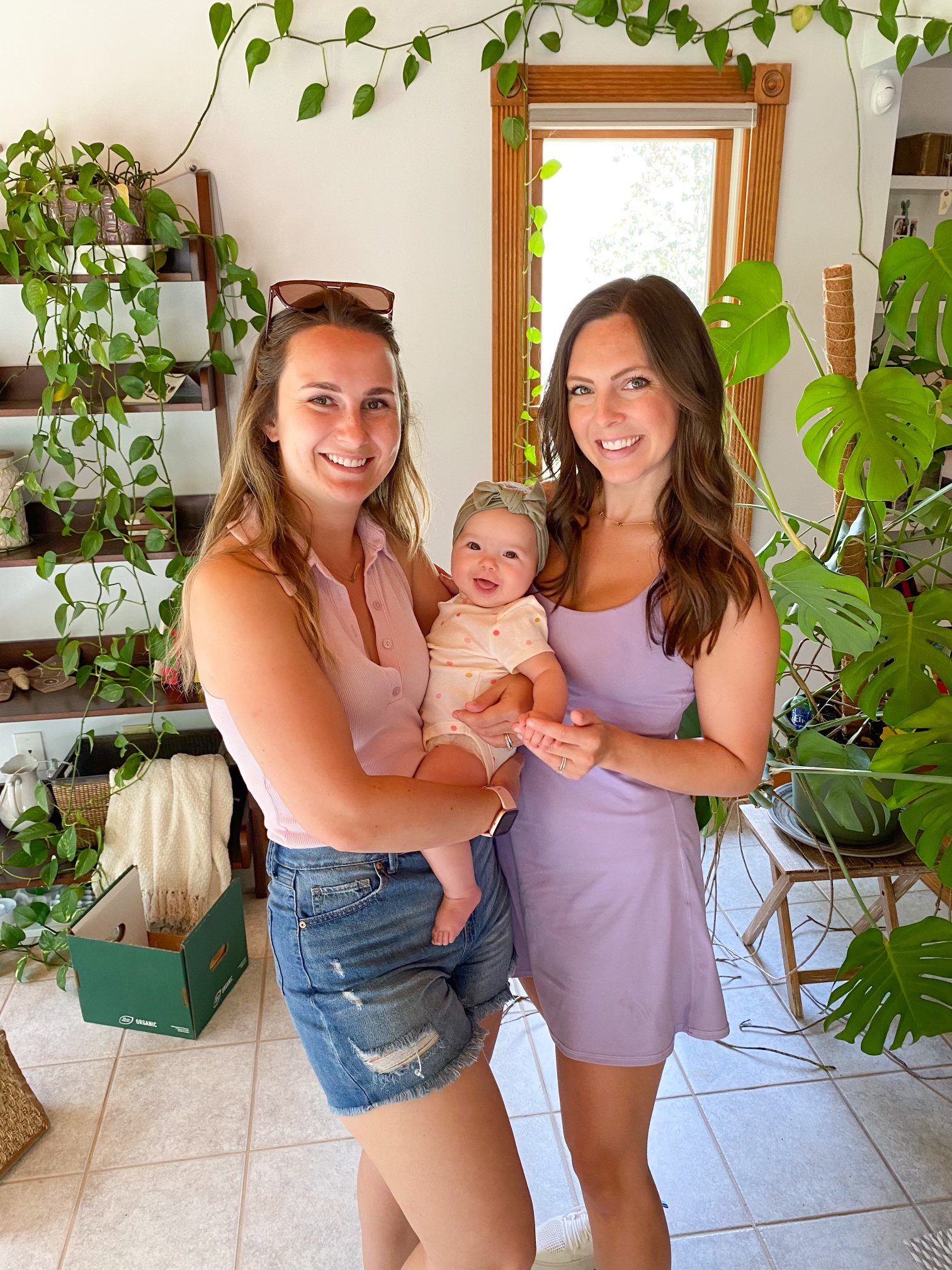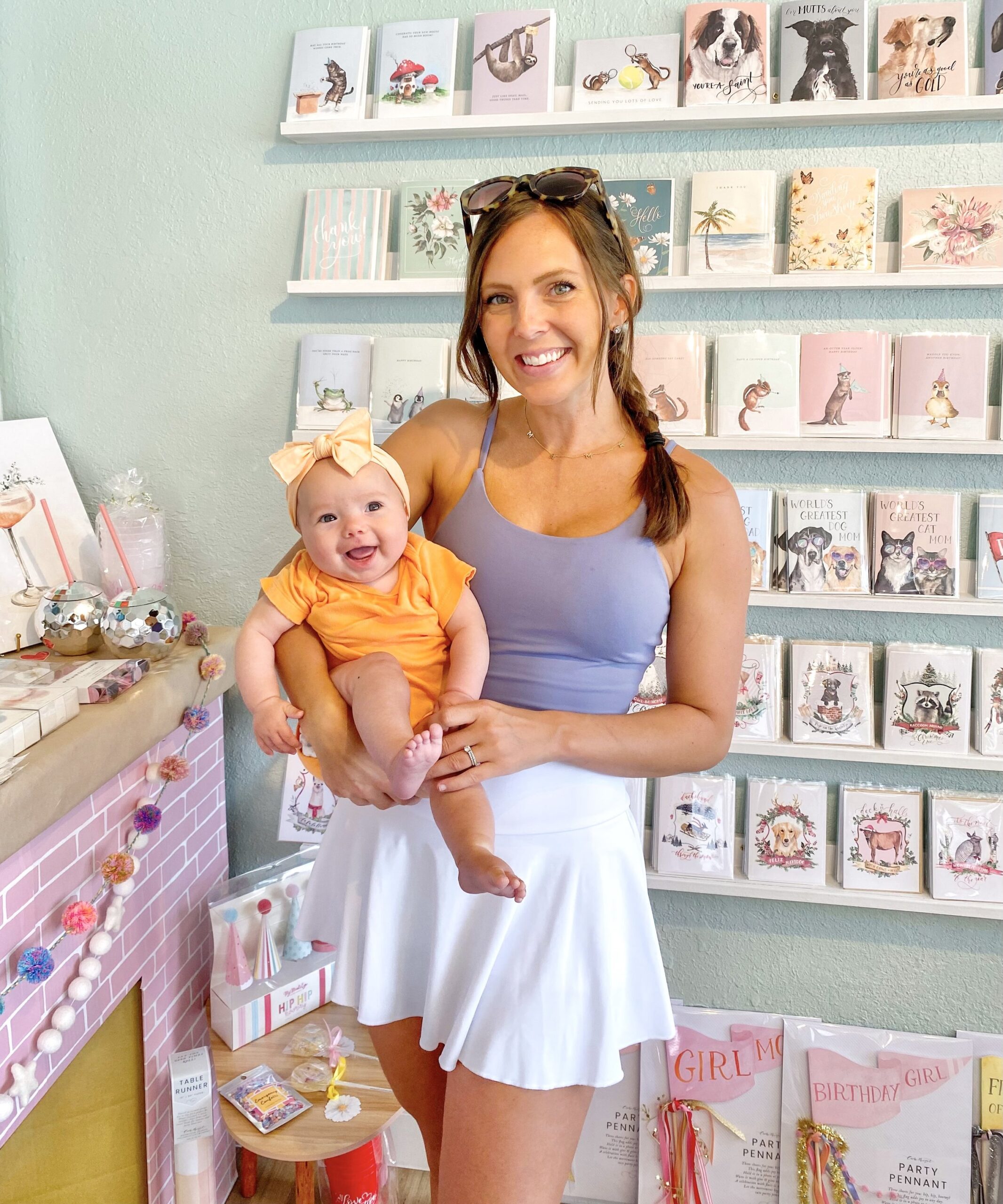Let’s get your business streamlined once and for all! Today, we’re bringing in Nikisha Hidalgo to spill the deets on how she has implemented systems in her two thriving Stationery Design companies over the years. Listen in to learn how she incorporates systems that keep client communication super simple. Plus, hear about how she keeps her mindset in check so that managing her creative team is a breeze.
Let’s be friends! Find us on Instagram http://instagram.com/bizbirthdaybash @bizbirthdaybash.
Grab your FREE Training — 4 Essentials You Need to Turn Your Biz into a Profit Party: https://bizbirthdaybash.com/free-training
Tell us a bit about your path to event stationery design! How did you end up where you are today?
Nikisha 3:46
So I ended up here and it’s like a weird path because I come from a background of health. It’s always been my thing. since I was five I wanted to become a physician. And I was headstrong and adamant about doing it. I went on to get my college degree and everything did my sciences. And then I was working in healthcare. And I realize helping someone can be done more than just a hospital setting. And I wasn’t too fond of what I saw for family structure. If I became a physician, I saw that because I interned and I worked in the hospitals. And the relationships between the physicians and their family was so different. It was something I didn’t want.
So I pretty much wanted to even get my creative side going and I did my invitations for my wedding. But other than doing that I just wanted to be able to sit down and design I don’t know if you guys are into stuff like that where you just get to pretty much imagine what you want something to look like and feel like you just Just do it. So I couldn’t do that because I was totally a left-brainer. I am a left-brainer. Regarding analyzing everything. If I do something I’m analyzing it. I’m looking for issues. And what I wanted to do was just be able to create without overanalyzing. So pretty much I had a friend who is in the event planning business, and we had a conversation and she said, Why don’t you look at doing invitations, right? And I said, Okay, I’m going to try that. And I got into it. And I pretty much enjoyed it. Because it allowed, it was challenging. I had to learn something new. So it was challenging me. And I started off small, I started off working with an affiliate company where you sell their products at like a 50% markdown or a relationship like that. And then the demand for customers started to become a thing. And I started to meet that demand. And that’s pretty much how my journey went.
When did you realize your business needed to be streamlined to create a great experience for your clients?
Nikisha 6:54
So I realized it when my volume or the demand for my services increased. So usually, when you start off, you might have two or three clients a month or something of that nature. And even then you still need a process. And that process is mental, right? It’s something you remember what you do, you do it every day. But when my numbers started to increase memory, I couldn’t rely on my memory because I felt like someone will slip through the cracks. So I pretty much learned that when my numbers increase, or if I change what I’m offering. That’s when I had to streamline, that’s when I had to get really specific and efficient. And how I do it, creating a workflow, something like a checklist to keep me pretty much streamlined in the process, so no one was left out. You know, in the wind zone, we are getting blown away.
What does your inquiry/onboarding process look like?
Nikisha 21:00
A lead completes my inquiry form, my inquiry form is connected to Tave. So when they submit an inquiry form, it comes right into Tave and creates a file for that lead. And in that file, I’m able to go in and create an email, right, and I do it right there. The email does not commingle with my Gmail account, that doesn’t come in with anything. It’s just their email. And that’s it. It’s used for me having the conversation of scheduling a phone call or a zoom call. And when it’s time to do a proposal, I generate that proposal, send it to them with the agreement. I use Tave when I do the form to get to know them to know what their Why Why are they seeking custom invitations, why are they looking to us for that service, and just getting to know my clients better. So Tave helps with the lead acquisition process. Once they book, it usually helps with onboarding them just pretty much sending an email with all the information for Trello. And then having my checklist of what needs to happen for that client. If that client is an invitation full service, that’s a different workflow. Then if it’s just invitations, it’s full service completely different than just my invitations, because we do everything, all their paper goods. So we have those checklists in our database. So pretty much we check it as we go along. So we don’t miss a step. And then they are onboarded to Trello. And that’s where all of our communication takes place where all the designs go. I also use loom which works well in regards to sending them a video of what they need to do or where they can find something without having to use so many words, and they’re totally confused.
What is your favorite platform for project and team management?
Nikisha 10:20
Once someone becomes my client, we move them into Trello. That’s what I use for my project management. And Trello is good at doing that. So it’s easy for them to use and everything is just there, all the communication, all our art designs, all our links to there, if they want to look at their agreement, or they have questions, it houses pretty much everything.
And those are the two things I implemented from the beginning. And so clarification for Trello are they receive like a client login through Trello, where they see everything that you have uploaded or is that on your back end business side for you to stay organized. So I use it in both ways. So one is client-facing meaning my client is invited to a board, they either sign up or if they already have a login, they sign in, when they open it, they only see that board and it has your name on it is personalized to them. And it has, what our pending list is. So the due dates and the things that we’re going to do next, everything is listed. And every time something’s completed, it gets moved over to our completed list. So in a way psychologically, it gives them a sense of we’re getting somewhere, right? It gives them a sense of things are getting done because they can see how the completed list gets full. And the pending gets small.
And I like that whole concept and they get to experience that, well, their designs are housed there. So everything we do is there. We don’t email anything or do anything of that nature. And then the other side of it is my team. I have a few artists that I work with with different team members. And we have our project boards. They’re a team member, I give, I give one project board to one team member. And I do that because it isolates that project with them. And that’s in the same thing, right, we have a collateral board. So all our collateral I need to get to them if they have to design something for me, we just have our due dates when something’s required. I like informing everyone, so everyone’s on the same page. So I use it for both my team and for my clients.
Tell us about the structure of your stationery business and how you knew you wanted to be at the forefront of the client interaction with a creative team to back you up.
Nikisha 24:40
So in regards to my business structure, I am an advocate for building a sustainable business without me being in it. I don’t want to be in my business. 24 seven, I do have kids and a husband. So I love getting away and knowing that my business can run without me. That’s my goal.
And in creating that I trust people. And I trust people because I know who I’m looking for. So I do have actual, how can I call it a job description of my team members, even people who are not with me yet I still have their description, I still have their duties and responsibilities. Therefore, when I’m ready to implement that position in my business, I know what I’m looking for. So I’m not frustrated, irritated, and overworked and then go search for help. I pretty much know what I need for my help. And then when I get to a place where my demand is requiring that I can go somewhere and search and be like, Okay, these criteria are met, let me interview them and see how they work out.
How often do you audit your business systems and make changes?
Nikisha 44:11
So for me, auditing will always be a process. I usually audit my business at the end of every quarter. So four times a year, I look at my numbers to see if they increase by 30% of how many people are coming into the system. I make sure that that system that I have, can hold up to the additional clientele, making sure no one’s falling through. If I change something like if I go from I do full services, but if I do something that is more for my commercial clients and I add something new to the business, I have to create a workflow and then I have to make sure that that stays up and maintained as well. Anytime you add something new to your system, there’s a workflow for it.








+ show Comments
- Hide Comments
add a comment